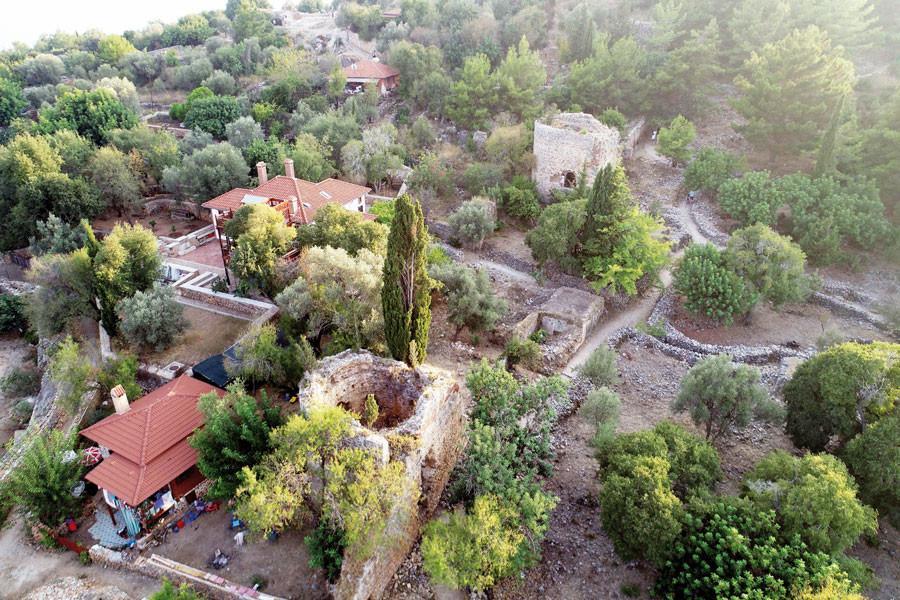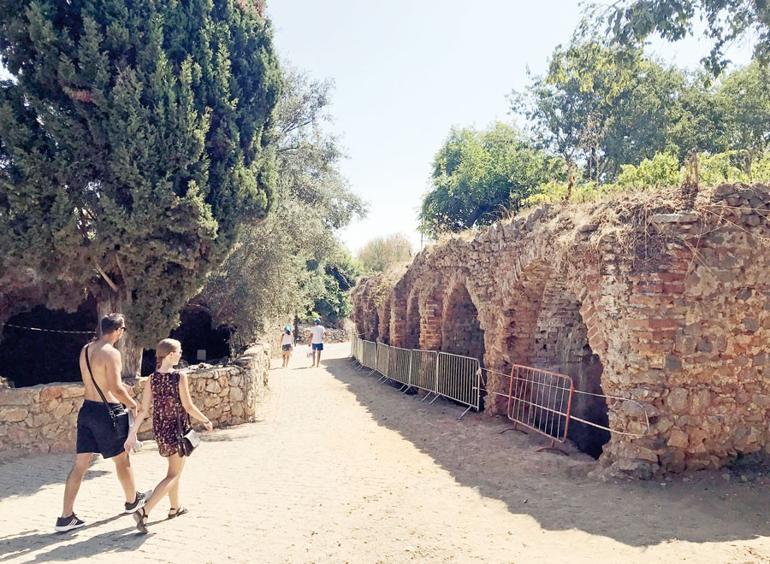
Excavation teams are unearthing a Seljuk-era bazaar in the historic Alanya Castle in the Mediterranean province of Antalya. According to one archaeologist, the finding will be the only bazaar dating back to the Seljuk times in Anatolia.
“There is no bazaar in Anatolia that dates back to the Seljuk period. But if archaeological researches prove it belongs to those times, this will be the only Seljuk-era bazaar in Anatolia,” said the head of the Alanya Castle excavations, Osman Eravşar.

The excavations this year revealed the bazaar was underneath a graveyard.
A team of 20 people have worked in the area for two months and are set to continue working after the graveyard is moved to another place.
Speaking to state-run Anadolu Agency, Eravşar said that Alanya, conquered by the Seljuk Sultan Alaaddin Keykubat, had become an important coastal town in the field of trade.
He said Alanya was home to many civilizations, but developed significantly in the Seljuk period. Noting that they did not have much information about Alanya’s urban development in the Ottoman era, Eravşar said a Venetian army had come to the Alanya harbor at the time of Kanuni Sultan Süleyman but left when a storm broke out.
He said the excavations revealed that the walls of Alanya had been reinforced at the time of Sultan Süleyman, adding, “At this time, a mosque [Süleymaniye Mosque] was built in the Alanya Castle Peninsula. In fact, this mosque was built on the places of a Seljuk mosque and the architectural pieces of this Seljuk mosque were used in its construction.”
He said historical documents showed that the bazaar dated back to the 16th century, but no archaeological works had been carried out there so far.
“We found an epitaph, which is dated 1087 in the Hijri calendar. It is the year of 1676 in Gregorian calendar. If we assume the Kanuni era was in the third quarter of the 16th century, there was destruction here in a process of 70-80 years. The bazaar began to be used as a graveyard after this destruction or something else,” he said.
Eravşar said they had obtained information that life existed in this place earlier, adding that settlement in the region started in 330 B.C. and continued uninterruptedly.
Speaking of Alanya’s UNESCO application, Eravşar said it was crucial for the bazaar to be protected as a traditional value for the region to be included in the UNESCO World Heritage list.
He said they found 40 graves in the area and that they would be transferred elsewhere.
“We got permissions. There is no legal obstacle. They will be moved to nearby places which are shown as graveyards in the reconstruction plan, ensuring their protection,” he said.